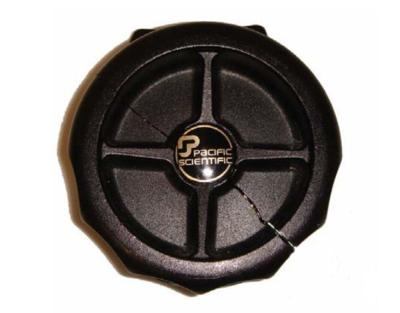Sat, Apr 10, 2021
AD 2021-07-13 Requires Inspecting Each Buckle Including Its Buckle Handle Vane
The FAA is adopting a new airworthiness directive (AD) for certain Pacific Scientific Company rotary buckle assemblies (buckles). This AD requires inspecting each buckle including its buckle handle vane, and depending on the results, removing the buckle from service and installing an airworthy buckle.

This AD also prohibits installing the affected buckles. This AD was prompted by several reports of cracked buckle handles. The actions of this AD are intended to address an unsafe condition on these products. This AD is effective May 11, 2021.
Supplementary Information: The FAA issued a supplemental notice of proposed rulemaking (SNPRM) to amend 14 CFR part 39 by adding an AD that would apply to Pacific Scientific Company buckle part numbers (P/Ns) 1111430 and 1111475, all dash numbers. The SNPRM published in the Federal Register on September 24, 2020 (85 FR 60100). The FAA preceded the SNPRM with a notice of proposed rulemaking (NPRM) that published in the Federal Register on September 5, 2013 (78 FR 54594). The NPRM proposed to require inspecting each buckle for a crack and the thickness of the buckle handle vane. Depending on the inspection results, the NPRM proposed to require replacing the buckle. The NPRM also proposed to prohibit installing an affected buckle on any helicopter or airplane. The SNPRM proposed to the same requirements except with longer compliance times to accomplish the inspections. The SNPRM also corrected the name of Pacific Scientific Aviation Services to Pacific Scientific Company, updated the estimated costs of
compliance, edited the Applicability paragraph by adding a note to clarify that an affected buckle could be included as a component of a different part-numbered restraint system assembly and reference Appendix 1 of Pacific Scientific Service Bulletin SB 25-1111432, dated May 22, 2007 (SB 25-1111432), which lists the P/Ns of potentially affected restraint systems, updated the names of certain potentially-affected Type Certificate holders, and updated the contact information name and contact information from Pacific Scientific Aviation Services to Meggitt Services.
The NPRM was prompted by EASA AD 2007-0256, dated September 19, 2007, issued by EASA, which is the Technical Agent for the Member States of the European Union, to correct an unsafe condition for certain Pacific Scientific Company Seat Restraint System Plastic Rotary Buckle Handles. According to EASA, Pacific Scientific Company reported several instances of cracked handles on certain buckles with a date of manufacture from November 2004 through May 2007.
Testing on buckles with a cracked handle indicated that in some circumstances, a load placed on the restraint system prevents a strap from releasing as intended when the buckle is rotated. EASA states in its AD that this failure to release is possible when a passenger weighs more than 50 kg (approximately 110 lbs.) and an aircraft is upside down.
More News
Airplane Bounced About 3 Ft Then Touched Back Down And Then, With No Brakes Applied, The Airplane Began Veering To The Left Analysis: The pilot entered the airport traffic pattern >[...]
Aero Linx: British Microlight Aircraft Association (BMAA) The primary focus within all aviation activity is SAFETY. In all aspects of our sport SAFETY must come first, whether it b>[...]
From SnF25 (YouTube Edition): William Wynne Builds Practical Aircraft Engines on the Corvair Platform Seeking an affordable alternative to the traditional aircraft engine options, >[...]
How To Get A Story On Aero-TV News/Feature Programming How do I submit a story idea or lead to Aero-TV? If you would like to submit a story idea or lead, please contact Jim Campbel>[...]
From 2023 (YouTube Edition): Bridge of CiES CiES Inc. is a Bend, Oregon-based designer and manufacturer of modular embedded aircraft systems and sensors. The company’s fuel-l>[...]
 NTSB Final Report: Aviat A1
NTSB Final Report: Aviat A1 ANN's Daily Aero-Linx (07.08.25)
ANN's Daily Aero-Linx (07.08.25) Classic Aero-TV: Fly Corvairs Reliable Engine Alternative
Classic Aero-TV: Fly Corvairs Reliable Engine Alternative ANN FAQ: Contributing To Aero-TV
ANN FAQ: Contributing To Aero-TV Classic Aero-TV: CiES Fuel-Quantity and e-Throttle Systems Praised
Classic Aero-TV: CiES Fuel-Quantity and e-Throttle Systems Praised



